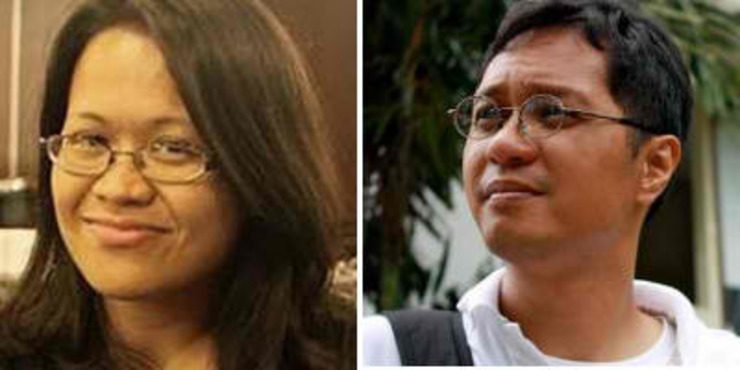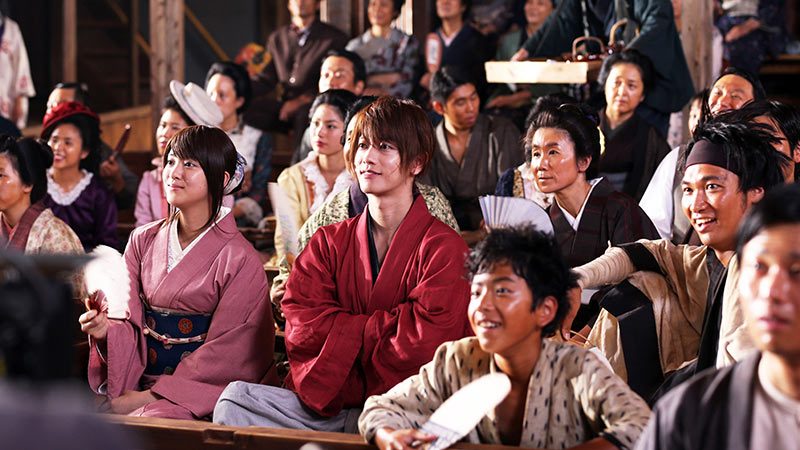SUMMARY
This is AI generated summarization, which may have errors. For context, always refer to the full article.

“New eras don’t come about because of swords. They are created by the people who wield them.” – Kenshin, Rurouni Kenshin
We first encountered Kenshin Himura during the late 1990s, when a local UHF station began airing episodes from the now classic anime Samurai X. Since then, we have grown to love this former assassin who turned his back on his past to embrace the hard-won peace of the early Meiji Period.
But apart from Kenshin, we have also been fascinated by the other equally colorful characters who add depth, pathos and complexity to the entire story. Some, such as Hajime Saito and Sanosuke Sagara, begin their careers as Kenshin’s antagonists, but eventually end up assisting our main hero in his succeeding adventures. (READ: What Rurouni Kenshin characters think of their characters)
But there are also the more sinister ones who continue to tread the path of violence, either to exact personal revenge or whose bloody ambition entail plunging the whole of Japan under a new dark age.
With such contrasting personalities and perspectives, Rurouni Kenshin becomes an excellent metaphor for the dynamics of social change and the difficulties involved in any political transition. What is perhaps the most critical dimension of political change depicted in Rurouni Kenshin are the dilemmas confronted by those who have to fight and protect the new to prevent the old from coming back.
The dilemma of change
Change simply means that something different and new has come about replacing the old. It signals the end of the old and the beginning of something new. As an objective or an end, change is achieved through a variety of ways and means.
Political change, meanwhile, centers generally on change in the political system or the system of government. It happens after the collapse of the old system or its decay. The perennial issue about political change centers on the ways and means used to achieve change and sustain it.
In Rurouni Kenshin, the central question raised is whether it is justifiable to use the ways of the old to protect the new. If the new is threatened by the elements from the past that use the old ways, is the use of the old ways by the protectors and elements of the new justifiable to protect the new? Is there still a place for the ways of the old – killing and violence that was used supposedly to pave the way for a new age – in the new era? Is there no escaping the old ways?
Kenshin’s message
For Kenshin, the new is only truly new if the ways of the past are no longer necessary to protect it.
Kenshin, a fearsome assassin called Battosai, vowed to stop killing because he believes killing is a way of the past. Such way has paved the way for the new age, where supposedly killing is no longer necessary. And such a new age can only be so if the ways of the old will no longer be resorted to – even in protecting the new age.
Therefore, for Kenshin, it should be the conscious decision of those wanting a new era to stop themselves from resorting to the old ways even if this seems to be the last resort to protect the new. Using the ways of the old to fight for the new is like becoming the enemy you want to defeat.
Means and ends are one
Means and ends are one. Your means will ultimately determine whether you have actually achieved your end. This is so because the end – change for the better – is only truly achieved if the means in achieving new ends will also be different.
Stretching this logic, new ends can only be imagined and achieved if the ways of the old have been discarded to pave the way for new ways and means. Our thinking won’t change unless our ways have changed, just as our ways would stay the same if we continue to think in the same way about the same things.

Resorting to the use of the same means in the new context would only result in a perpetual cycle of the same end justifying the use of the old means until such time when the two are no longer distinguishable – means and ends as two sides of the same coin, a shadow to each other.
Demand more
Kenshin also shows what change requires. Bringing about something new demands a lot. It demands a change from us most importantly, which is oftentimes the hardest. We are, after all, a product of our past.
The ways of the old that we once mastered to pave the way for the new – this, we must unlearn. We must resist the temptation of using it too, even to protect the new.
To do so, we must reinvent ourselves. We must learn new ways and befriend those who flourish in making and using new ways to achieve new ends. Kenshin harnesses a sakabato or reverse-edge sword to protect the innocent who he thinks should own and chart the new era.
This entails mastering of the self and defeating it to be different and to defend and protect those who are different using the new ways that we have learned. This is not an easy undertaking, but as Kenshin once remarked, “Perhaps the distant part of the sky always seems clearest, so that we will always strive to reach it.”
Does it work?
This is the central question of the story of Rurouni Kenshin: will such conviction work?
The Kenshin story is all about the many attempts to taunt, challenge and defeat such principle and how every step of the way, the main protagonist, Kenshin, with the help of his friends, overcomes the challenges, deflects the temptations, and stays true to his principle. And for every fight won, Kenshin becomes better ready to face stronger enemies.
Kenshin becomes better with stronger conviction. Such is a necessary shield as he faces his succeeding challenges.
The new allies he wins over, the friends he makes, the hearts he is able to convince – all these make him better.

Most importantly, Kenshin becomes better as he wins each fight – strengthening his conviction and winning over the hearts and minds of people around him in the process – he is winning the battle. He is becoming the new era that he has been fighting for. – Rappler.com
Joy Aceron is program director at the Ateneo School of Government. Francis Isaac is researcher at the Jesse M. Robredo Institute of Governance of the De La Salle University. Both are big fans of Kenshin Himura, who is an inspiration of Francis in joining the Manila Kendo Club.
Old Japan sketch image via Shutterstock
Add a comment
How does this make you feel?





There are no comments yet. Add your comment to start the conversation.